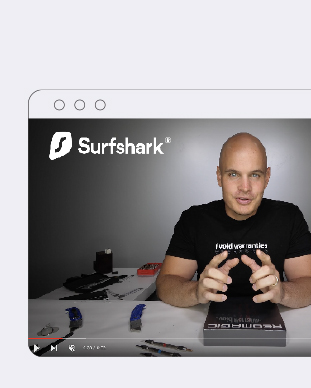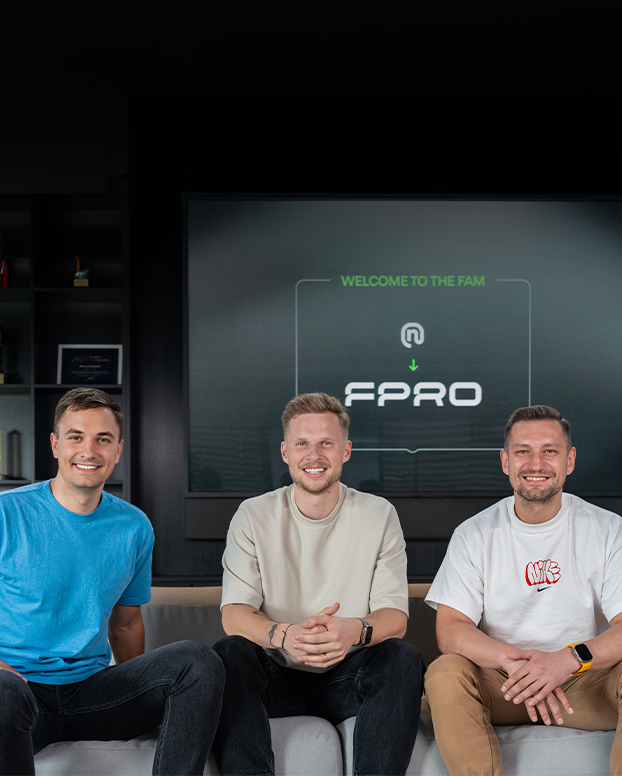
3 super-practical tips startups need to know from an influencer marketing expert
August 25, 2022•5 mins read
In a recent article, Giedrius Petraitis, Head of Influencer Marketing at Surfshark, talked us through the main benefits of influencer marketing for startups.
In particular, he emphasised how important influencer marketing has been in enabling Surfshark to grow rapidly in international markets. This is because this marketing format has some key advantages.
Firstly, it is capable of tackling the whole marketing funnel. Secondly, it has localization built in. And thirdly, it brings powerful engagement that is based on genuine interpersonal interactions.
We wanted to hear more from Giedrius on what startups should do to get their influencer marketing right. So, he shared 3 tips startups should follow when getting started with this powerful approach. These super practical tips cover forecasting results, conducting background checks, and using influencers for multiple content types.
Tip 1: Learn how to predict and calculate
First up, Giedrius has some advice on how to calculate whether a particular influencer, or even a specific campaign, will be worth it or not.
Giedrius is quick to point out that learning how to predict the success of a particular influencer or campaign takes time and practice. But for anyone getting started in influencer marketing, there is a useful formula that serves as a good place to begin.
(Image source: Surfshark)
Here’s Giedrius’ explanation of this formula. “For performance-oriented campaigns, it is crucial to consider click-through and conversion rates and how much a person spends on average on your website. The average amount of views is essentially an indicator of reach. Combining these numbers is the first step to understanding what could happen in one specific case.”
Tip 2: Check an influencer thoroughly before working with them
“In general, influencer marketing means you are not always in control,” explains Giedrius.
“Some influencers have close to no business mindset, so agreements and contracts might mean nothing to some of them. Plus, there are numerous cases when influencers fail to advocate the brand correctly, or sometimes darker things can emerge.”
“So it’s very important to do a proper background check before you work with anyone.”
Your background check should include a detailed look at previous campaigns and research into which other brands they have worked with.
And once you have conducted your background check, you’ll need a working contract.
Some important technical points that need to be covered by your contract
Firstly, think about the scope of the work. Along with defining the volume and timeframe of content items to be produced, you should set out the level of creative freedom the influencer will have. Be sure to clarify the approval process as well, and make sure key performance indicators are specified.
Secondly, there are rights and intellectual property (IP) to consider. Your contract should be unambiguous as to who actually owns the content produced. Does the influencer own it, and give you rights to use it, or vice versa? You can also specify exclusivity (also known as non-competition), which can require the influencer not to work with competitors.
The question of IP is important, because there is a lot of potential to reuse content an influencer has created. “You can repurpose content for your social media channels, which can be an effective way to increase engagement and traffic,” says Giedrius. “And it is even better if the content is unique, and created specifically for your social accounts. This can bring some of the influencer’s audience onto your channels to enjoy the content they made for you.”
Which leads us neatly onto tip number 3 …
Tip 3: Think beyond the initial content unit
“Influencers can have a much bigger impact than, for example, the initial one-minute integration in a video,” says Giedrius.
“Website content is one of the easier ways to get influencers involved. From dedicated landing pages to product tutorials, you can use influencer content to create incredible website experiences.”
“The same goes for organic content. Influencers are searched for a lot on Google, so you can make your own brand discoverable by leveraging your influencers’ notoriety.”
“Email marketing is also an interesting option,” says Giedrius. “For example, for many SaaS companies, the first purchase will have happened through a specific influencer. If you can work with that influencer on email content throughout the customer’s initial subscription period (and maybe even beyond), you can reduce churn rates.”
“Finally, you can also get influencers involved creatively in your paid ads (creative ads featuring an influencer will perform better), and you can also repurpose content (or better still get unique new content) for your social media accounts.”
Combine best practices with a clear overall strategy
To truly be successful, these best practices need to be coupled with an effective overall influencer marketing strategy.
In the case of Surfshark, its strategy hinges on volume and creativity.
“We are not talking about 10 or 20 sponsored videos on YouTube a month. We are talking about influencer marketing at scale,” explains Giedrius. “And we always support creativity. After all, what if, instead of interrupting the viewing experience, ads tailored to each viewer complimented it?”
With a clear approach like Surfshark’s in place, the practical tips in this article should help at critical stages in your influencer marketing project. These range from forecasting the potential value an influencer can bring through to vetting them and setting up an effective working relationship. Then you can maximize the impact of each influencer you work with by getting them involved in multiple forms of content.
Read more like this
-
Marketing
April 26, 2024•10 mins read
Getting the most out of your marketing: Performance marketing for your early-stage startup
-
Marketing
October 4, 2023•6 mins read
When to imitate and when to innovate: Marketing for your early-stage startup
-
Marketing
August 9, 2022•6 mins read
Growing globally? A marketing expert explains why influencer marketing is the perfect channel
-
Marketing
July 8, 2022•5 mins read
Entering new markets? Here’s the localization checklist and expert tips you need







